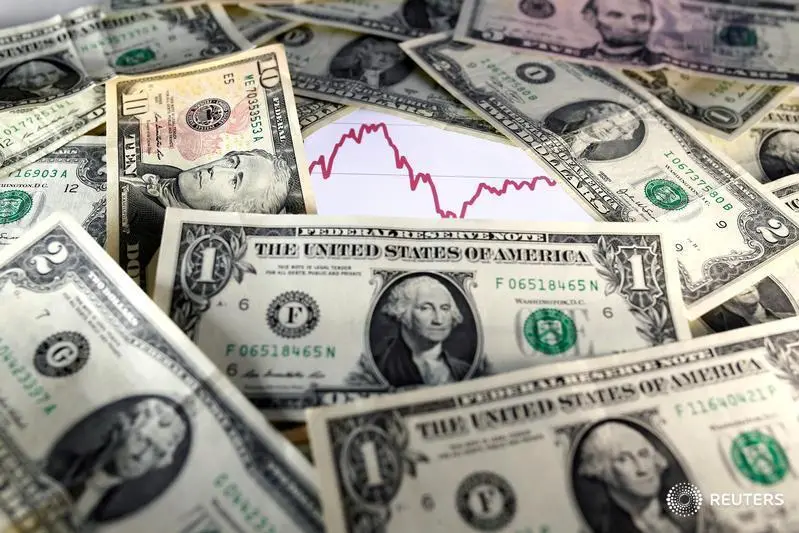PHOTO
LONDON - The dollar traded near the middle of its range of the past month versus major peers on Thursday, as traders looked to next week's Federal Reserve policy meeting for indications on how soon the U.S central bank will start to taper stimulus.
The dollar index, which measures the currency against six rivals, was 0.2% higher at 92.626, little changed from Wednesday.
It reached a two-week high of 92.887 at the start of the week, only to drop to a one-week low of 92.321 on Tuesday after a softer-than-expected inflation report. Its low for the month was 91.941, hit on Sept. 3, when payrolls data disappointed.
On Wednesday, industrial production data in the U.S. marginally missed expectations, while import and export prices came in below expectations.
The figures, alongside this week's inflation report, will help reduce pressure on the Federal Reserve at its meeting next week, said Robert Cobo Garcia, head of FX strategy at BBVA.
Even so, he said, commodity prices and the prices subcomponents of the "Empire" survey suggest inflation pressures driven by rising costs are not over.
"The transmission to final consumer prices will have implications for the Fed’s reaction function even though it may still be too early to see any change in the Fed’s stance in the FOMC meeting next week, especially after the downward surprise in core CPI," Garcia wrote in a note to clients.
"Overall, domestic news flow and data could give some direction to the USD but ranges against FX majors should persist into the FOMC meeting next week."
The Federal Open Market Committee's (FOMC) two-day policy meeting ending Sept. 22 should provide some clarity on the outlook for both tapering and eventual interest rate hikes.
Tapering typically lifts the dollar as it suggests the Fed is one step closer to tighter monetary policy.
It also means the central bank will be buying fewer debt assets, in effect reducing the amount of dollars in circulation, which in turn lifts the currency's value.
The dollar gained 0.1% to 109.28 yen, after sliding to a six-week low of 109.110 in the previous session.
The euro was 0.2% lower at $1.1786, consolidating between the month's high and low of $1.1909 and $1.17705.
NORWAY'S CROWN
Elsewhere, Norway's crown was a touch lower at 8.5965 per dollar, off the more than two-month high of 8.5598 reached overnight amid a rally in oil prices.
Against the euro, the crown touched its strongest level since June 25 at 10.1119.
"EURNOK is one of the preferred exposures to play a rising crude price, and we're seeing a solid bearish trend here," Chris Weston, head of research at broker Pepperstone in Melbourne, wrote in a note to clients.
"If Brent and WTI crude are headed for their respective double tops then EURNOK is going one way in my view."
The Australian dollar slipped back toward the lowest this month as Dalian iron ore prices slumped to a new low for the year.
The Aussie lost 0.2% to $0.7315, after dipping to $0.73015 on Wednesday for the first time since Aug. 31.
Earlier, data showed the country's jobless rate unexpectedly fell to 4.5%, but the statistics bureau said the change reflected a drop in the participation rate rather than a strengthening of the labour market.
The New Zealand dollar was edged up 0.1% to $0.7112, giving up an earlier jump of as much as 0.47% after the economy grew at a much faster pace than expected. The strong gross domestic product data reinforced the view that the central bank will start lifting interest rates despite a recent coronavirus outbreak.
(Reporting by Ritvik Carvalho, additional reporting by Kevin Buckland in Tokyo, editing by Timothy Heritage) ((Ritvik.Carvalho@thomsonreuters.com; +44 2075429406; Reuters Messaging: ritvik.carvalho.thomsonreuters@reuters.net; Twitter @ritvikcarvalho))












